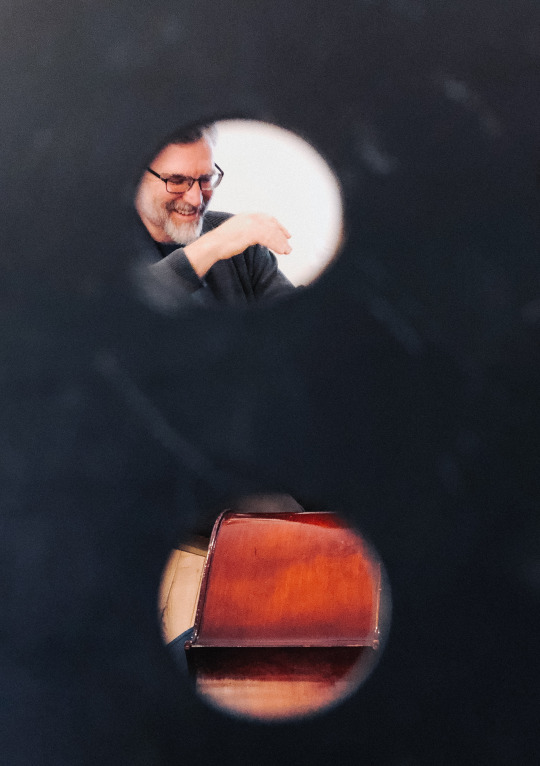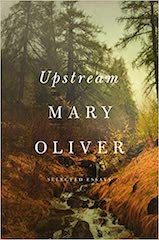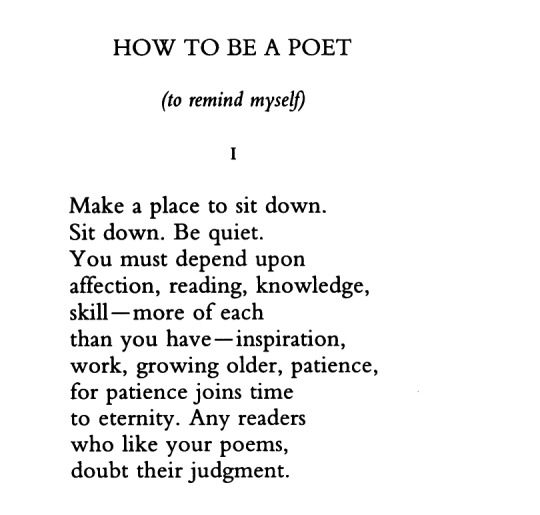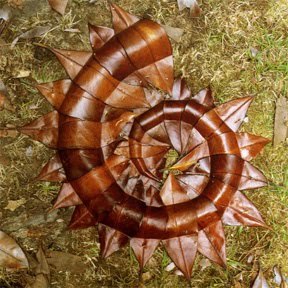#we won’t see any more of the Missa art. just gone.
Explore tagged Tumblr posts
Text
Well this is the end of Phil always saying Phil and Missa when he warps back home. Phil won’t say that phrase any more. No more Phil and Missa lmfao. Not to mention all the pictures and art missa did. Completely gone. Blank state now lmfao. But hey archivists are gonna be neighbors.
#qsmp#I’m more upset that literally the pictures and the art are gonna be wiped. even the number one Phil art is probs fully gone.#we won’t see any more of the Missa art. just gone.#Phil would want to go back to basics so I can see him fully deciding to delete the main wall house and just kept like the rose sanctuary
62 notes
·
View notes
Text
Listed: Joshua Stamper

Photo by Christopher McDonald
After 25 years composing and arranging, Joshua Stamper’s versatility remains as notable as ever. The artist moves fluidly from classical to indie-rock to chamber music and more. While collaborating with acts like mewithoutYou and Robyn Hitchcock or scoring films, he manages to release his own work, too. Reviewing Stamper’s most recent release, Justin Cober-Lake described PRIMEMOVER as a “soundtrack for a particular kind of year in the church life, one with puzzles and rest, beauty and complication.” His work, as with PRIMEMOVER or his new Elements project, tends to be multidisciplinary, with Stamper incorporating an array of influences from outside music. With his breadth of input and output, it's no surprise that Stamper would offer us a list that includes music, visual art, philosophy, and poetry.
Thierry De Mey — “Unknowness, for percussion and sampling: Love Function is to Fabricate Unknowness”
youtube
My brother gave me Thierry De Mey’s Kinok for my birthday about twenty years ago. He bought it on the strength of the album cover alone. It’s a record I have returned to dozens of times. “Unknowness” is utterly arresting — a deep and loose sway juxtaposed with startling percussive gestures as unpredictable as ricocheting gunshots. It is all swing, mystery, magic, and space. I feel when listening that I am reduced to sub-atomic scale, where mountains of granite become a gossamer mesh that I move through as a stroll in the park, looking at trees that are freeze-frame explosions.
John Cage — “Water Walk”
youtube
4'33" is a popular punching bag for Cage critics. The piece is derided as an adolescent practical joke from an impertinent child of a composer who gets his kicks deliberately wasting audiences’ time. “It's not music” is the common refrain, but the complaint behind the complaint is that it is alienating; that the only way in which the piece facilitates communal experience is that everyone feels on the outside of an inside joke.
When I was younger, I shared this impatience with Cage. Then I came across “Water Walk,” a piece premiered in January 1960 on the popular TV game show I’ve Got A Secret. My view of John Cage and his music were both upended, instantly and utterly. Instead of a preening and pretentious provocateur I encountered a playful and guileless individual filled with wonder; one who took unfettered joy in people, invention, and the sheer fact of sound.
In the space of one viewing, 4'33" shifted from an insolent and self-satisfied prank to a concentrated celebration of community and sound — a wide-eyed invitation to pause, together, all of us here sharing this space, LISTEN, all of us here sharing this space, together, pause. My self-righteousness shattered. All becomes music. I haven't heard anything the same way since.
I’ve since spent a great deal of time with his writing, lectures, poems, prints and music, and wonder how I could have ever thought ill of the man's intentions. It may seem obvious, but Cage taught me that an artist’s own life is the clearest interpretative lens through which to understand their work.
Prince and the Revolution — “I Wonder U” (from Parade)
youtube
Sgt. Pepper-esque sound design, kaleidoscopic orchestral arrangements, the hushed voices of Prince, Wendy and Lisa riding on a composite groove of such integrity and force that it sounds like it's forged from steel...
I first encountered Prince’s Parade the summer between my high-school graduation and my first year of college. “I Wonder U” is less than two minutes long, but I was stopped in my tracks. The song feels like the liminal space between dreaming and waking, at once welcoming and dangerous, where multiple musics converge like Charles Ives’ double marching bands destined for head-on collision. Discreet melodies and rhythms and keys bleed in and out of each other, but also exist as vital layers in a larger whole. It's a hypnotizing 3-D sonic Venn diagram.
My decision to major in composition was set.
Jasper Johns — “Regrets”, 2013, oil on canvas

Jasper Johns said, “I think that one wants from a painting a sense of life. The final statement has to be not a deliberate statement but a helpless statement. It has to be what you can't avoid saying.”
“a helpless statement” – I find myself breathing deeper and slower with Johns’ words, grateful for the reminder that before anything else, art making must be grounded in vulnerability and weakness. The hope and the challenge in Johns’ words is its call to distillation, to get to the heart of the heart of the heart of a matter, where there is simply nothing else that can be said. The process of distillation even involves the shedding of all those things we sometimes mistake for the work itself: craft, expertise, training, credential. There’s a threshold that must be crossed, a moment of lift-off where will and deliberation are left behind and the work takes flight on what is inevitable, as involuntary as a cry or a laugh.
Palestrina — “Missa Brevis”
youtube
“Painting is time, music is space.” So said one of my brother’s undergrad art professors. Of course, you’d expect the opposite, as space is the context in which painting exists while time is the fundamental warp and woof of music. But my most profound experiences with music are always characterized by new spaces being revealed or created. By “space,” I don't mean some state of cerebral or emotional revelry. I mean real, actual space — with dimensions. A space that’s shocking in its physicality. This happens to me constantly.
My first experience of Palestrina’s “Missa Brevis” was in a choir rehearsal in my junior year of high-school. It was a catalytic event. A braid of interweaving melodies and counter-melodies emerged, enveloping me and everyone else singing, and the room seemed to expand. I wanted more. The vocational pull to become a musician was like being swept out to sea.
Every time I return to this piece, I experience this expansion. The patient dip and rising of every “Kyrie,” “eleison” and “in excelsis” creates its own cosmology, its own dimensions and gravity. Our relationship to time is also a relationship to space; their woven-ness is inextricable. The space-time continuum isn't just a physics thing.
Ann Hamilton — The Event of A Thread

Years ago, I had the opportunity to experience The Event of A Thread by Ann Hamilton at the Park Avenue Armory in New York City. A massive silk that moves like water or vapor, a field of swings, a record stylus, wooden crates of live pigeons, paper scrolls spilling onto the floor, a ceiling peppered with pulleys, bags of words and sacks of sound... It's difficult to describe the piece, in either its scope or particulars, but I became a child.
In Ann Hamilton's discussion of the piece, she says, “It happened because a space was made for it to happen.” The inverse implication of this statement is that if space isn't made, things won’t happen. In my experience, solitude, reflection, exploration and craft are so easily bullied by the crush of life and of calendars, but Hamilton’s observation presses an urgent case for the care and protection of these kinds of spaces to think and puzzle and make. How much wonder, play, rest, and beauty could exist only for want of a place to exist?
So, with that, “it happened because a space was made for it to happen” – my working manifesto.
Mary Oliver — Upstream (Section One: “Of Power and Time”)

“It is a silver morning like any other. I am at my desk. Then the phone rings, or someone raps at the door. I am deep in the machinery of my wits. Reluctantly I rise, I answer the phone, or I open the door. And the thought which I had in hand, or almost in hand, is gone.”
The untroubled waters of a day whose promises have yet to unfold are not untroubled for very long. But the most persistent interruptions are those that come, as Oliver describes, “not from another, but from the self itself.” The resonance for me is deep.
In a 2015 On Being interview, Mary Oliver tells a story about when she learned she had received the Pulitzer Prize for Poetry (she didn't even know that her latest, American Primitive, had been submitted for the award): she was at the town dump looking to buy shingles to shingle a roof with. A painter friend of hers came by, joking, “Ha, what are you doing? Looking for your old manuscripts?”. Oliver just laughed and continued looking. When recounting the story to Krista Tippett, she chuckled and said, “...my job in the morning was to go find some shingles.”
To simply be dedicated to the work of the day, to be unmoved and uninterrupted by either rejection or by accolade represents a degree of settledness that I find very beautiful and very challenging.
She was known for writing while she was walking...
Ludwig Wittgenstein / Wendell Berry — “How to Be a Poet”

To continue on the subject of the working life, last night I came across a beautifully concise quote from Ludwig Wittgenstein that speaks to a consistent tension I experience: the urgency to cultivate the solitary and silent spaces required for thinking and working, and a loud and frenetic pull in the opposite direction to “produce” (to what end? - I constantly find myself asking). He simply says: “I can only think clearly in the dark."
This sentiment is echoed in Wendell Berry's proverb-like poem “How to Be a Poet” (wit and wisdom go together well):
“...Any readers who like your poems, doubt their judgement.” [...]
“Stay away from anything that obscures the place it is in.”[...]
“...make a poem that does not disturb the silence from which it came.”
Both Wittgenstein and Berry cut against the grain of popular priorities of content-creation, audience-building, beating the algorithms and cutting through the noise (again, to what end?). Instead, they throw open a window to the generous gifts and glories of a life lived in obscurity.
Andy Goldsworthy

Andy Goldsworthy’s work re-convinced me that art has power. That it is able, for those with ears to hear and eyes to see, to create or reveal a different way of inhabiting the world, of inhabiting one's own humanity. My introduction to Goldsworthy was a documentary by Thomas Riedelsheimer called Rivers and Tides: Andy Goldsworthy Working With Time. I watched tall stone cairns being built on the beach, slowly and carefully, only to be disassembled by the gentle but unremitting incoming tide. I was transfixed by bright yellow leaves stitched together and set loose along a creak, moving like a lazy water snake, wending around rocks and logs and gradually twisting and breaking apart. Balls of bright red dust thrown into the air to form dissipating crimson clouds; delicate stick-curtains collapsing at the breath of a breeze; one-ton snowballs on a London summer day, melting to water and then to air.
As Westerners we tend towards a conception of beauty that is extremely specific, a precise and particular point in time: the crest of a wave, a flower that's just bloomed, a new car rolling off the truck at the dealership, a man or a woman at twenty-five... But Goldsworthy's work does something different. It includes these moments but also folds them into something larger. One begins to see the whole story of a thing, from its initial conception all the way to its inevitable fading or destruction, and all of it is beautiful. This changes everything.
I recognize in myself a preference for the promise of a thing more than the reality of a thing, but as I interact with Goldsworthy’s work my understanding of beauty is slowly and gently disassembled, like one of his beach cairns. It is replaced with a widened aperture, a more charitable and hospitable read of the people and the world around, and I'm welcomed into a more generous way of being.
Ornette Coleman — “What Reason Could I Give” (from Science Fiction)
youtube
Jane Austin’s Mr. Knightley says to Emma Woodhouse, “If I loved you less, I could talk about it more...”
All I can say about this piece: I’m fully convinced that this is what angels sound like.
#dusted magazine#listed#joshua stamper#thierry de mey#john cage#prince and the revolution#jasper johns#palestrina#ann hamilton#mary oliver#ludwig wittgenstein#wendell berry#andy goldsworthy#ornette coleman
0 notes